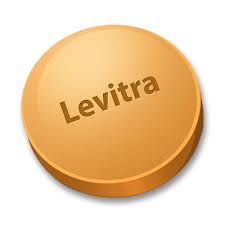
Understanding Antikoagulancia: Types, Uses, and Precautions
Antikoagulancia play a crucial role in modern medicine, particularly in the management of cardiovascular diseases. These medications help to prevent blood clots, thereby reducing the risk of serious health complications such as stroke and heart attack. For more information about antikoagulancia, visit Antikoagulancia https://liekprekazdeho.sk/antikoagulancia/ to learn about various types and their specific applications.
What are Antikoagulancia?
Antikoagulancia, commonly referred to as anticoagulants, are drugs that inhibit the coagulation (clotting) of blood. They are primarily used to treat and prevent conditions where blood clots can lead to severe health issues. Understanding their mechanisms, applications, and risks is essential for both healthcare professionals and patients.
Types of Antikoagulancia

There are several classes of anticoagulants, each functioning through different mechanisms. The main types include:
- Vitamin K Antagonists (VKAs): These include warfarin and acenocoumarol. They work by inhibiting the synthesis of vitamin K-dependent clotting factors in the liver.
- Direct Oral Anticoagulants (DOACs): This category includes rivaroxaban, apixaban, edoxaban, and dabigatran. They directly target specific proteins in the coagulation cascade, offering faster onset and fewer dietary restrictions compared to VKAs.
- Parenteral Anticoagulants: Heparin and low molecular weight heparins (e.g., enoxaparin) fall under this category. They are typically administered via injection and are often used in hospital settings.
How Antikoagulancia Work
Antikoagulancia function by disrupting the normal coagulation process in the body. When a blood vessel is injured, platelets aggregate to form a clot, and clotting factors are activated in a cascade to stabilize the clot. Anticoagulants interfere with this process in various ways, depending on their type:
- VKAs: They inhibit vitamin K epoxide reductase, an enzyme essential for the synthesis of clotting factors II, VII, IX, and X.
- DOACs: Each DOAC targets a specific clotting factor. For example, dabigatran inhibits thrombin, while rivaroxaban and apixaban target Factor Xa.
Medical Uses of Antikoagulancia
Antikoagulancia are prescribed for a variety of medical conditions, including:

- Atrial Fibrillation: Patients with this condition are at high risk for stroke due to the formation of blood clots in the heart.
- Deep Vein Thrombosis (DVT): Anticoagulants are used to treat DVT and prevent the formation of blood clots in the deep veins of the legs.
- Pulmonary Embolism: They are critical in treating and preventing PE, which occurs when a blood clot travels to the lungs.
Dosage and Administration
The dosage and administration of anticoagulants depend on various factors, including the specific drug, the condition being treated, and individual patient characteristics such as age, kidney function, and weight. Monitoring is often necessary, especially for VKAs, to adjust doses and ensure that blood coagulation levels (usually measured by INR – International Normalized Ratio) remain within the target range.
Side Effects and Precautions
While anticoagulants are effective in preventing blood clots, they also come with risks. The most significant side effect is an increased risk of bleeding, which can be serious and sometimes life-threatening. Recognizing the signs of excessive bleeding, such as unusual bruising, prolonged bleeding after cuts, or blood in urine or stools, is crucial for patients on anticoagulants.
Patients should also inform their healthcare providers about all medications, including over-the-counter drugs and supplements, as many can interact with anticoagulants and alter their effectiveness or increase the risk of bleeding. Certain foods, especially those high in vitamin K, can also affect VKAs, necessitating consistent dietary habits.
Conclusion
Antikoagulancia are a powerful tool in the prevention and management of thromboembolic disorders. Understanding their mechanisms, uses, and potential side effects allows for safer and more effective use of these medications. Always consult with a healthcare professional before starting or stopping any anticoagulant therapy. With proper management, patients can lead healthy lives with reduced risks of serious cardiovascular events.